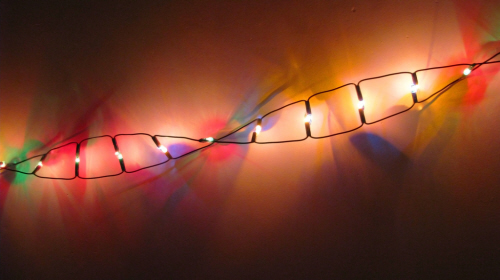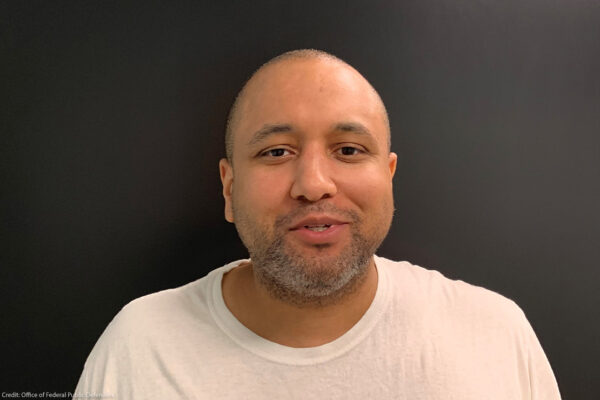
Recently, Dr. James Watson filed an amicus brief opposing gene patents in our lawsuit challenging the patents on two human genes associated with hereditary breast and ovarian cancer. Dr. Watson, along with Francis Crick, identified DNA’s ability to create life through its double helical structure and its information-coding sequences in 1953. His brief explains why, from the perspective of a scientist whose work laid the foundation for all genetic research, gene patenting is “lunacy.”
Clearly, the discovery of DNA’s double helix was an extensive undertaking of world-historic importance. But did Dr. Watson need the incentive of patents to inspire his work, as proponents of gene patents have argued?
Amusingly, after I gave my first presentation of our DNA structure in June 1953, Leo Szilard, the Hungarian physicist and inventor of the nuclear chain reaction, asked whether I would patent the structure. That, of course, was out of the question.
Why was patenting DNA out of the question? In Dr. Watson’s view, DNA is fundamentally unique, storing the information necessary to create and propagate life.
DNA’s importance flows from its ability to encode and transmit the instructions for creating humans. Life’s instructions ought not be controlled by legal monopolies created at the whim of Congress or the courts.
Decades later, at the National Institutes of Health, Dr. Watson led the Human Genome Project, the pioneering international effort to sequence the entire human genome, and faced the issue of gene patenting head on. At the time, NIH and others were actively filing patents on genes. After opposing the practice to no avail, he resigned from NIH in 1992.
I believed at the time – and continue to believe – that the issue of patenting human genes went to the very crux of whether the information encoded by human DNA should be freely available to the scientific community.
That issue is now before the U.S. Court of Appeals for the Federal Circuit for the second time in our lawsuit against Myriad Genetics. A district court originally held that Myriad’s patents on the BRCA1 and BRCA2 genes were invalid because they claim “products of nature.” The court of appeals reversed, in a 2-1 decision. A majority of the court held that “isolating” the DNA – simply removing it from the cell – created a patentable molecule. In March, the Supreme Court vacated this ruling and ordered the court of appeals to reconsider the case.
In his brief, Dr. Watson points out the scientific flaws in the appeals court’s original reasoning, which focused on trivial chemical differences that result once DNA is removed from the cell and disregarded how isolated DNA encodes for the same proteins as DNA in one’s body.
The myopic viewpoint thinks of a human gene as merely another chemical compound, composed of various bases and sugars. But history and science teach us otherwise. A human gene, which is a product of nature, is useful because it conveys vital information.
Dr. Watson’s stance ultimately prevailed within the government. Nearly twenty years after his departure from NIH, the U.S. government filed two briefs in our litigation concluding these patents are invalid.
Beyond the issue of whether gene patents should be evaluated according to DNA’s biological versus chemical qualities, another central question before the Federal Circuit will be whether these patents foreclose future innovation. Gene patents – unlike patents on drugs or tests – cannot be “invented around” because they claim DNA itself. While another company can create a new drug to treat the same condition as another patented drug, patents on DNA block access to people’s genetic information. They stop other labs from testing the patented genes – regardless of the testing method that is used or whose sample is tested – and chill research, impeding the progress of science. As a result, patients face barriers to obtaining the most comprehensive testing, second opinions, and low-cost testing.
Dr. Watson echoes this point:
To this day, we continue to learn how human genes function. We estimate that humans have approximately 22,000 genes. We have yet to fully understand the functions of all human genes, but this lack of understanding is further reason that scientists should be permitted to experiment on human genes free from any threat of patent infringement.
We are still at the early stages of understanding our genome, how different genetic and environmental factors interact and cause disease, and how we might translate this knowledge into treatment and prevention. These relationships are complex and we should encourage, not limit, scientific inquiry.
But according to Myriad, scientific work isn’t harmed, because it only patented two of our genes. In its latest brief, it said:
Rather than seeking to broadly preempt the use of gene sequencing research, Myriad seeks to protect only its particular invention (the isolated BRCA1 and BRCA2 molecules), not any of the other 20,000 human or other genes.
That attitude ignores the importance of these two genes for families with hereditary risk, as well as the complexity of genetic research. BRCA1 and BRCA2 may be the most well-known genes associated with breast and ovarian cancer, but scientists have shown that there are at least twenty others; understanding how they function together is key to deepening our knowledge of these diseases, and the many other diseases that may be connected to BRCA1 and BRCA2. Luckily for all of us, Myriad didn’t identify the other 20,000 human genes and patent them as well.
Oral arguments before the Federal Circuit will take place on July 20. We’ll update you as the case progresses, but in the meantime, join our Take Back Our Genes campaign.
Stay informed
Sign up to be the first to hear about how to take action.
By completing this form, I agree to receive occasional emails per the terms of the ACLU's privacy statement.
By completing this form, I agree to receive occasional emails per the terms of the ACLU's privacy statement.


